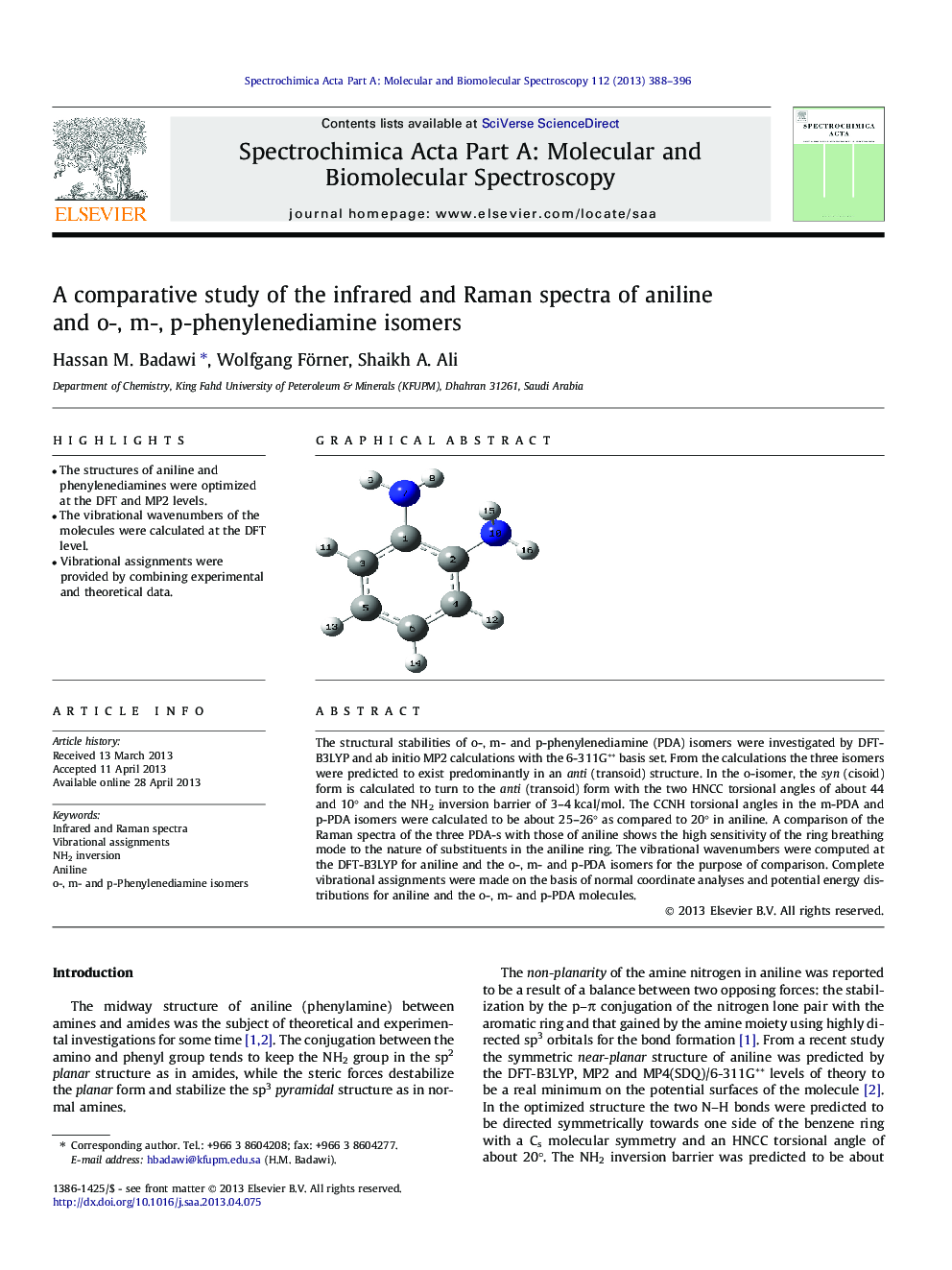| Article ID | Journal | Published Year | Pages | File Type |
|---|---|---|---|---|
| 1230759 | Spectrochimica Acta Part A: Molecular and Biomolecular Spectroscopy | 2013 | 9 Pages |
•The structures of aniline and phenylenediamines were optimized at the DFT and MP2 levels.•The vibrational wavenumbers of the molecules were calculated at the DFT level.•Vibrational assignments were provided by combining experimental and theoretical data.
The structural stabilities of o-, m- and p-phenylenediamine (PDA) isomers were investigated by DFT-B3LYP and ab initio MP2 calculations with the 6-311G** basis set. From the calculations the three isomers were predicted to exist predominantly in an anti (transoid) structure. In the o-isomer, the syn (cisoid) form is calculated to turn to the anti (transoid) form with the two HNCC torsional angles of about 44 and 10° and the NH2 inversion barrier of 3–4 kcal/mol. The CCNH torsional angles in the m-PDA and p-PDA isomers were calculated to be about 25–26° as compared to 20° in aniline. A comparison of the Raman spectra of the three PDA-s with those of aniline shows the high sensitivity of the ring breathing mode to the nature of substituents in the aniline ring. The vibrational wavenumbers were computed at the DFT-B3LYP for aniline and the o-, m- and p-PDA isomers for the purpose of comparison. Complete vibrational assignments were made on the basis of normal coordinate analyses and potential energy distributions for aniline and the o-, m- and p-PDA molecules.
Graphical abstractThe optimized anti structure of o-phenylenediamine.Figure optionsDownload full-size imageDownload as PowerPoint slide
